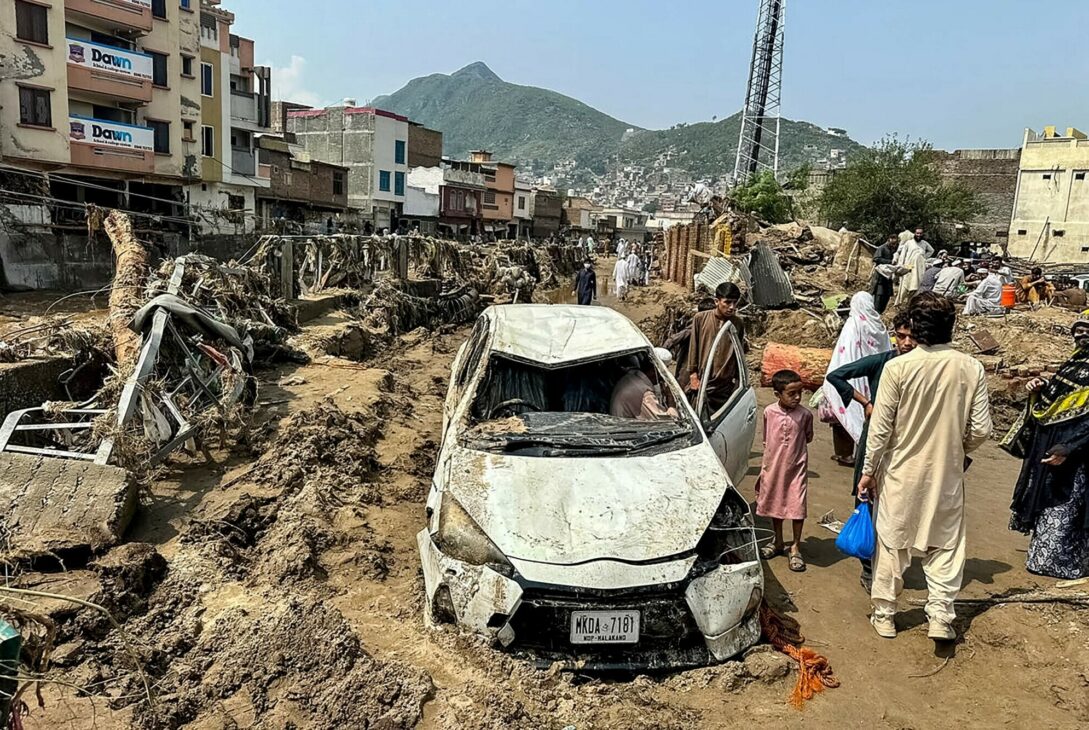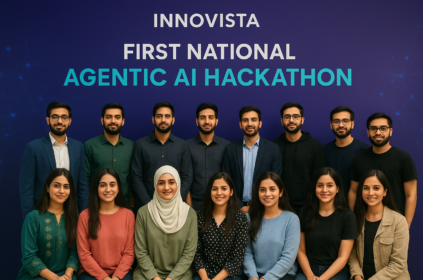In an era where climate change amplifies the frequency and intensity of natural disasters, innovative technologies are emerging as lifelines for vulnerable communities. Recently, Khyber Pakhtunkhwa (KP) Chief Minister Ali Amin Gandapur visited flood-ravaged areas in Swat, unveiling plans to integrate advanced flood prevention technologies inspired by global leaders like Switzerland and India. This move not only addresses immediate recovery but also signals a shift towards proactive mudslide risk reduction using cutting-edge tools, including artificial intelligence (AI) for early warnings and structural defenses. For tech enthusiasts and disaster management professionals, this development highlights how data-driven solutions can save lives and rebuild trust in governance.
As a tech blog dedicated to exploring how innovation intersects with real-world challenges, we’ll dive deep into this story. We’ll cover the flood’s impact, the government’s response, the technologies being adopted, and the role of AI in revolutionizing disaster preparedness. By the end, you’ll understand why these advancements could set a benchmark for regions worldwide facing similar threats.
The Devastating Impact of Floods in Swat and Malakand
Floods and mudslides have long plagued Pakistan’s northern regions, with Swat and Malakand division bearing the brunt in recent years. On August 18, 2025, CM Gandapur chaired a high-level meeting in Saidu Sharif, attended by key officials including Chief Secretary Shahab Ali Shah, provincial assembly members, and civil administrators. Officials briefed him on the extensive losses: destroyed homes, disrupted infrastructure, and tragic human casualties.
The floods, triggered by heavy monsoon rains and possibly exacerbated by climate change, washed away roads, hospitals, and electricity networks. Encroachments on riverbanks—illegal constructions that narrow waterways—worsened the devastation, turning manageable rains into catastrophic events. As Gandapur noted, “The loss of human lives is the greatest tragedy, which can never be compensated.” Yet, the material damage runs into billions, affecting livelihoods and eroding public trust in past government promises.
This isn’t isolated to Pakistan. Globally, floods cause over $40 billion in annual damages, according to the World Bank. In Swat, the story is personal: families displaced, farms ruined, and communities isolated. But amid the chaos, there’s hope—technology is stepping in to prevent future repeats.
Government Commitment: Compensation, Reconstruction, and Justice
During his media address post-meeting, CM Gandapur emphasized the provincial government’s unwavering support. “The government will not abandon the affected families,” he assured, pledging full compensation for financial and material losses. This includes rebuilding homes, but only in safe zones to avoid recurring disasters—a pragmatic approach rooted in data-informed planning.
Gandapur highlighted the need to restore public trust, criticizing past broken promises. He positioned the state as a “mother” ensuring justice and rights for all citizens. Key announcements included:
- Restoration of Infrastructure: Immediate repairs to electricity networks, hospitals, and roads.
- Encroachment Removal: A non-discriminatory drive, similar to successful operations in Dera Ismail Khan, with public and political cooperation.
- Federal Support Appeal: While appreciating condolences from the Prime Minister, Gandapur urged national aid, framing compensation as a “right, not a favor.”
Financially, KP is stronger than ever. Gandapur revealed an endowment fund now at Rs190 billion, generating Rs850 million daily—enough to fund rehabilitation without foreign aid. This self-reliance underscores a tech-savvy governance model, where resources fuel innovation rather than dependency.
Introducing Advanced Technologies for Mudslide and Flood Prevention
The highlight of Gandapur’s visit was the launch of a survey in vulnerable areas to deploy advanced technologies for mudslide risk reduction. These solutions, already proven in Switzerland and India, aim to mitigate stone-laden floods and landslides. Let’s break down what this means and how it fits into broader disaster management in Pakistan.
Technologies Inspired by Switzerland
Switzerland, a mountainous nation like KP, invests heavily in flood protection—spending billions to reduce damages by up to 90%. Their strategies include:
- Steel Net Barriers and Protective Structures: These flexible nets catch debris from mudslides and avalanches, protecting roads and infrastructure. Economical and effective, they’ve been used for decades.
- Early-Warning Systems: Continuous monitoring of rainfall, groundwater, and ground movement via sensors and terrain mapping. AI integrates this data for real-time alerts.
- Spatial Planning and Forests: Conservation of “protection forests” and afforestation to stabilize soil, reducing erosion risks.
- Dams and Dikes: Wooden/stone dams control sediment, while dikes limit flood extent.
KP’s plan mirrors this: Surveys will identify high-risk zones for barrier installations and sensor networks, potentially halving future losses.
Innovations from India
India, facing similar Himalayan challenges, has pioneered community-driven and tech-heavy solutions. Notable examples include:
- Landslide Early Warning Systems (LEWS): Rainfall-induced alerts with 76.5% accuracy, like the “Satark” model predicting slides a day ahead.
- Sensor Networks: Web-based tools like rain gauges, piezometers, and inclinometers for monitoring soil moisture and movement.
- GNSS-R Mapping: Satellite tech for flood-prone area identification, aiding urban planning.
- Algorithms for Prediction: AI-driven models detecting landslide movements with 80-94% accuracy.
- Drones and Robotics: For risk assessment and post-disaster surveys, enhancing response times.
By adopting these, KP could deploy localized alerts via mobile apps, empowering communities to evacuate early.
The Role of AI in Revolutionizing Disaster Management
Artificial intelligence is the game-changer in AI in flood forecasting and overall disaster resilience. The content from Gandapur’s visit hints at AI integration—perhaps through predictive analytics—to enhance these technologies.
AI processes vast datasets: satellite imagery, weather forecasts, and hydrological data for accurate predictions. Google’s AI provides 7-day flood forecasts in 80 countries, including Pakistan. In practice:
- Predictive Modeling: Machine learning improves warning times, reducing uncertainty in storm and flood models.
- Real-Time Decision Support: AI analyzes topography and urban data to prioritize vulnerable areas.
- Post-Disaster Relief: Drones with AI map damage, optimizing aid distribution.
- Preventative Measures: AI designs flood barriers and simulates scenarios for better planning.
For KP, AI could integrate with Swiss-style sensors and Indian algorithms, creating a hybrid system. Imagine apps notifying residents of impending mudslides, or AI-optimized barriers dynamically adjusting to threats. Challenges remain: data privacy, infrastructure costs, and training locals. But with KP’s Rs190 billion fund, implementation is feasible.
To learn more about AI’s global impact, check our related article on AI in Climate Adaptation or this authoritative source from the World Bank on Disaster Tech.
Challenges and the Path Forward
Despite optimism, hurdles exist. Encroachments, as Gandapur noted, persist due to court stays, demanding legal reforms. Public patience is key—new constructions must halt. Climate change amplifies risks, with one-fifth of Swiss-like populations exposed. In India, localized warnings face scaling issues.
Solutions? Collaborative efforts: Federal-provincial partnerships, international tech transfers, and community education. KP’s self-funded model could inspire other provinces, turning disaster response into a tech-driven ecosystem.
Conclusion: Building a Resilient Future
Khyber Pakhtunkhwa’s response to the Swat floods exemplifies how advanced tech for natural disasters can blend governance with innovation. By adopting Swiss barriers, Indian sensors, and AI forecasting, the province is not just recovering—it’s fortifying against tomorrow’s threats. This tech-forward approach restores trust, saves lives, and positions Pakistan as a regional leader in disaster management.













